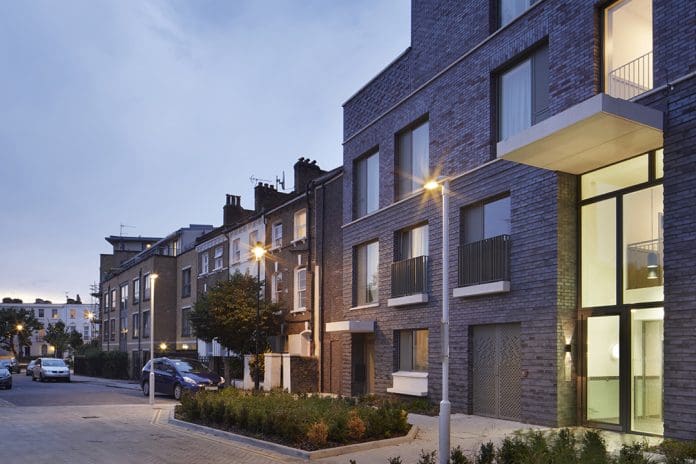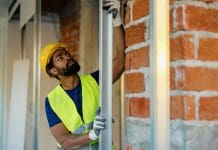A new report from the NHBC Foundation explores the UK’s progress towards adopting a Passivhaus standard, the barriers that remain in house building and the cultural shift required to embed the approach in new homes
Over 10 years ago, NHBC Foundation looked at the German experience of building to the Passivhaus standard, examining political, economic and social drivers, as well as the general attitudes, that helped or hindered the uptake of Passivhaus in its birthplace.
At the time, this was in the context of the UK government’s commitment to deliver zero carbon new homes from 2016 onwards.
However, a decade later some of the concerns, particularly for consumers, have shifted. Recent energy price increases have made homeowners more aware of the running costs of homes and the need to reduce energy consumption. This means that the benefits of Passivhaus are potentially needed more urgently than ever.
That is why NHBC Foundation has created a new report, The UK’s Progress Towards a Passivhaus Standard in New Homes.
This report looks at the barriers, such as why the delivery of Passivhaus at scale remains a considerable challenge for the housebuilding industry, as well as highlighting where progress has been made.
The report also considers the cultural shift needed to construct homes to this standard in addition to how the end user will need to adapt to living in a low energy home.
The origins of Passivhaus
Passivhaus is an energy-efficient building design and construction concept that originated in Germany in the 1980s. The fundamental principle behind Passivhaus is to create structures that minimise the need for active heating or cooling systems.
Through a combination of design strategies and high-quality building materials, Passivhaus buildings aim to maintain a comfortable indoor environment throughout the seasons, while also substantially reducing energy consumption.
The concept is owned by the Passivhaus Institut of Darmstadt, which strictly regulates the certification of buildings and ensures quality standards are upheld.
Why do we need Passivhaus in new homes?
Housing supply in the United Kingdom continues to be insufficient to meet demand. In England alone, the annual target is for 300,000 new homes a year, with new build expected to deliver most of this.
Considering one of the biggest contributors to the UK’s greenhouse gas emissions is the built environment (accounting for up to 30% of all emissions according to RICS’ report on
decarbonising UK real estate), it is clear new homes will need to be delivered with low energy demand and zero-carbon ready.
But the progress of Passivhaus development in the UK has been slow.
Only 2,900 fully certified buildings have been constructed in the UK. Yet there has been a considerable shift in how Building
Regulations incorporate key Passivhaus principles to enhance standards.
What could this mean for house builders?
While there has been an increase in the adoption of Passivhaus principles in the country’s construction industry, progress has been slower than anticipated due to challenges related to education and perceived costs.
This report looks at the barriers to adoption and highlights the opportunities being brought forward through government policies across the UK. It also explores the concerns raised by house builders about the feasibility of developing homes at volume to Passivhaus standards.
However, Passivhaus can also benefit house builders through its capability beyond being ‘just’ a building standard; it is also a premium comfort standard. By offering environmental advantages, significantly reduced utility bills and enhanced indoor air quality, it provides tangible, long-lasting benefits to the homeowner.
The UK building industry’s ability to adapt is well-established but there also needs to be a cultural shift to support the transition to net zero homes. To reach net zero, UK homes will have to be constructed considerably closer to the Passivhaus principles than they are today. This means that the homes of the future will need to be more airtight and include new ventilation methods to accommodate this.
“Through a combination of design strategies and high-quality building materials, Passivhaus buildings aim to maintain a comfortable indoor environment throughout the seasons, while also substantially reducing energy consumption.”
House builders are understandably cautious about the risks associated with adopting this approach and there is a growing recognition that consumers might not yet be ready for the lifestyle changes required to fully embrace Passivhaus standards. That is why, if the long-term adoption of Passivhaus is to be used as a solution for the UK’s growing demand for energy-efficient buildings, it will necessitate increased understanding and funding for both developers and homeowners to comprehend the impending changes.
Consulting the experts
Established in 2006, NHBC Foundation provides high quality research and practical guidance to support the house-building industry as it addresses the considerable challenges of delivering new homes in the 21st century.
NHBC Foundation has produced this report in partnership with Sava, a team of building physicists and engineers with extensive experience in supporting the residential property sector through education, technology and professional services. The report was also supported by house builders Barratt Homes, the Hill Group and Ron Beattie, as well as Eco Design Consultants, Adam Gravely and the Passivhaus Trust.
Richard Smith, head of standards, research and technical competency at NHBC, said: “This report looks at the many important aspects of Passivhaus and its enduring influence on how we can reduce the energy needs of new homes. It also benefits from a wealth of knowledge, expertise and experience shared with us by the contributors.
“Since we published our first report on Passivhaus in 2012, the standard has continued to evolve in the UK, providing recognition for sites incorporating renewable energy generation, retrofit projects and for developers requiring a transition towards a
full certification. There is no doubt that the momentum of Passivhaus has laid the groundwork for many of the improvements we can make today.”
Download your copy of the new report The UK’s Progress Towards a Passivhaus Standard in New Homes for free from www.nhbc.co.uk/passivhaus
*Please note: This is a commercial profile.














